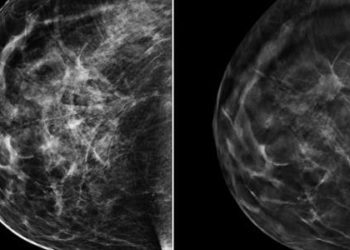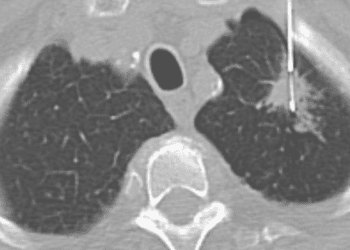HPV Testing for Women Aged 60-64 Detected More High-Grade Lesions than Cytology for Cervical Cancer Screening
1. In women aged 60-64, screening for cervical cancer with HPV testing versus cytology led to more positive screen results, greater detection of high-grade cervical intraepithelial neoplasia (CIN), but not a significantly higher number of cervical cancer diagnoses.
Evidence Rating Level: 2 (Good)
When conducting primary screening for cervical cancer, many countries have transitioned from cytology to testing for high-risk human papillomavirus (HPV). This is because HPV testing yields fewer false negatives than cytology. In Denmark however, because the prevalence of HPV was so high in other age groups, only women in their 60s were immediately switched over to HPV testing for screening. HPV testing was also considered to provide more protection from having cervical cancer after women “age out” of the screening program. The current study compared the proportions of Danish women between ages 60 and 64, with inadequate or positive screening results (for cytology or HPV testing), high-grade cervical intraepithelial neoplasia (CIN), or a cervical cancer diagnosis. The study found that a positive screening test result was more likely with HPV testing than with cytology, and that identification of CIN 2 or worse was also greater for those screened with HPV testing. However, no differences in cervical cancer diagnosis was found. The relative risk for a cervical cancer diagnosis after a negative result was 4 per 100,000 in both screening tests. Although the study did not adjust for sociodemographic disparities, it is considered unlikely that these factors would be different before and after the switch to HPV testing, as screening was prevalent throughout this time. As well, screening test results in Denmark from both these time periods were collected and used in this study.
Click here to read the study in Obstetrics & Gynecology
Relevant Reading: Efficacy of HPV-based screening for prevention of invasive cervical cancer: follow-up of four European randomised controlled trials
In-Depth [retrospective cohort]: The study population consisted of 116,892 women screened in the cytology period and 54,397 screened in the HPV period, all between 2009 and 2016. A sample was considered to be a primary screen if there were no other cervical tests conducted 2 years prior to the sample. For a cytology screen to be considered positive, any atypical squamous cells of undetermined significance (ASC-US) or worse were detected, whereas more simply, a positive result on an HPV test was considered a positive screen. Outcomes such as detection of CIN 2 or worse, or a cervical cancer diagnosis were identified if within 2 years of the primary screening. The results showed that the proportion of women with an adequate screening test was greater for HPV testing (99.4%) than with cytology (98.5%). As well, approximately 3 times more women had a positive screening result with HPV testing (5.3% vs 1.9%, relative proportion 2.80, 95% CI 2.65-2.96). Detection of CIN 2 and 3 were also increased for HPV testing (0.5% vs 0.3%, relative frequency 1.54, 95% CI 1.31-1.80 for CIN 2; 0.4% vs 0.2%, relative frequency 1.52, 95% CI 1.27-1.82). Cervical cancer detection increased by 27% in HPV testing, but was not statistically significant (relative frequency 1.27, 95% CI 0.76-2.12), and the relative risk of cervical cancer after a negative screen for the HPV testing period compared to cytology was 0.99 (95% CI 0.41-2.35). Overall, this has important implications for the work of pathologists, as this study demonstrated a 95% reduction in cytopathology workload. Because some cellular changes that come with age may be difficult to distinguish from dysplasia, the use of HPV testing may decrease overtreatment of benign findings.
Image: PD
©2021 2 Minute Medicine, Inc. All rights reserved. No works may be reproduced without expressed written consent from 2 Minute Medicine, Inc. Inquire about licensing here. No article should be construed as medical advice and is not intended as such by the authors or by 2 Minute Medicine, Inc.







